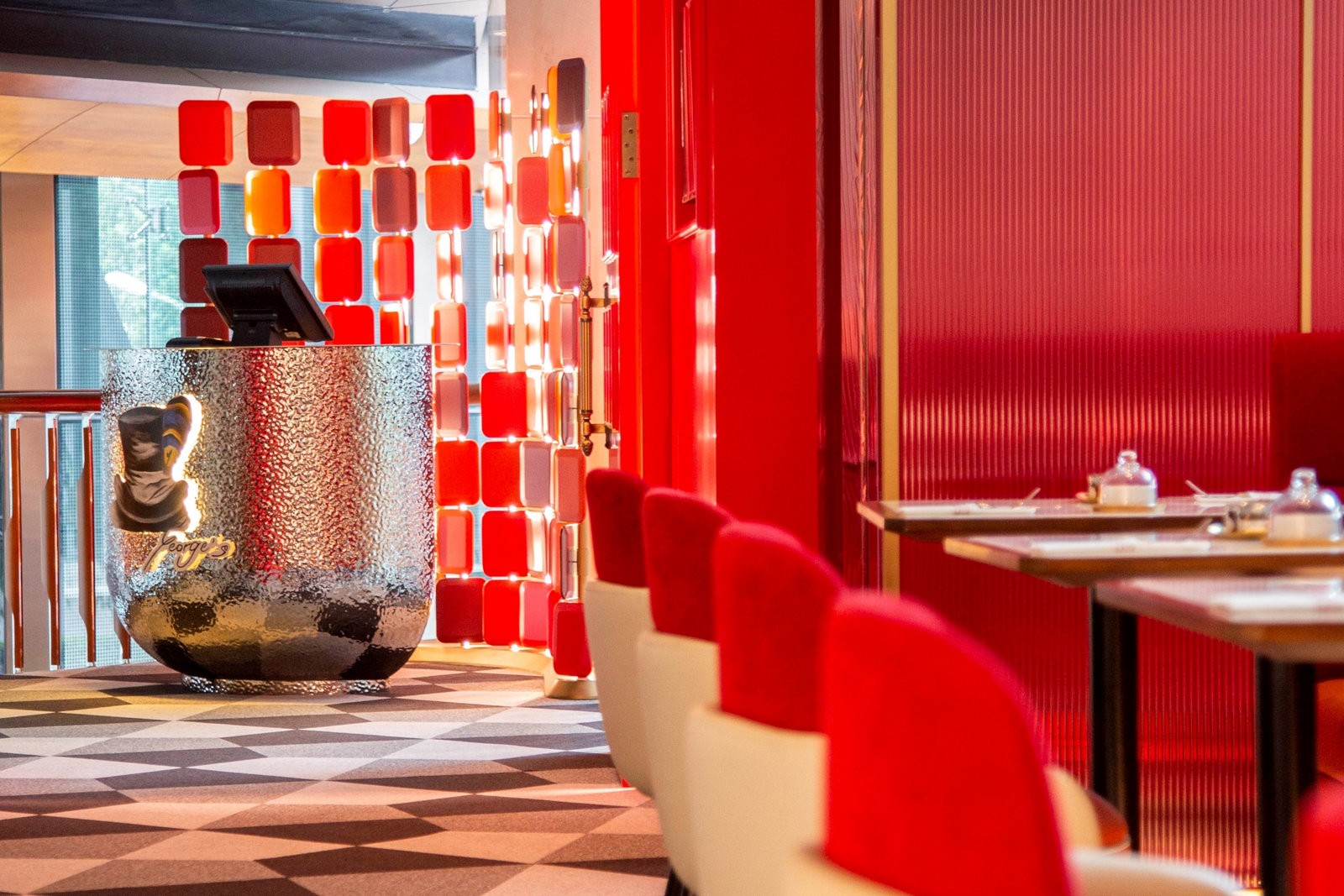At Green Valley amusement park in Baoding, a rainbow-colored Ferris wheel turns slowly against a clear, cloudless sky. In the neighboring Botanical Garden, autumn leaves fall around a lake on which tourists pedal in small boats. These are hardly scenes you’d expect in a city that, at the beginning of last year, was named China’s most polluted.
If you were to be generous about the downtown area of this 11-million-person metropolis – now less than 45 minutes from Beijing by train – you might describe it as pleasant. Even if you weren’t feeling generous, there is little worse to say about Baoding than it being indistinguishable from other third-tier cities in North China.
Such blue-sky days are a rarity here, however. In February 2015, China’s Ministry of Environmental Protection (MEP) found Baoding to have the worst air quality in the country. That winter, the concentration of PM2.5 (the most common measure of pollutants) averaged at around 185ug/m3. To put this number into context: it’s the upper end of what classifies as ‘unhealthy’ and was more than double Beijing’s readings for the same period.

The extent of Baoding’s battle with air pollution is evident on the roads leading out to the factory belt
In addition to the vehicle emissions that plague most large cities, the economy here relies on heavy, coal-dependent industries like steel, cement and base metals. When the smog descends, Baoding assumes new bleakness. The sullied air is less obvious in the built-up center, but at the city’s outskirts rows of corn quickly fade into the hazy near-distance. Few people here wear masks, a decision that leaves a distinct metallic taste on the tongue.
But Baoding’s air quality has actually improved drastically in the last two years. The latest figures, provided to That’s Beijing by Greenpeace, show that in the first half of 2016, average PM2.5 readings were almost 26 percent lower than the same period in 2015. And last year was itself a comparatively good one, with overall air quality about 16 percent better than in 2014. Pollution levels may be falling from an incredibly high baseline, but change is – quite literally – in the air.
On a clear autumn morning we meet university lecturer David Hu, who’s based in Baoding and often travels back and forth to Beijing.
“Traveling from Beijing to Hebei on the train, the sky changes color – it gradually turns from light blue to gray,” he jokes before adding: “The [air] was pretty good in Baoding this past spring and summer though, better than last year. But I’m not sure what’s going to happen in winter.”
Taxi driver Guo is also quietly hopeful. “It’s getting a little better. The government is trying,” he says as we drive past a road sign reminding drivers: “Only cars with license plates ending ‘4’ and ‘9’ are permitted to drive today.”
At the Ancient Lotus Pond, one of China’s oldest classical gardens, long-time resident Mr. Li, 74, is sitting at a pavilion beside the water.

Baoding resident Mr. Li 74
“When the weather is nice, this is a beautiful place,” he says, gesturing towards the gardens.
Unfortunately, today is not one of those days. Li seems to sense our skepticism.
“The air in Baoding is still really bad – like today,” he says. “But it can get much more severe. Will it change for the better? I don’t know.
“Last year was like this too. When winter arrives, the cold returns. And because of Baoding’s location, air doesn’t reach the area very easily, so the smog doesn’t shift. A little wind can clear up the air nicely, but then after a couple of days it’s back to being bad.”
Baoding is relying on more than the breeze to reinvent itself. Some of the measures being taken are visible in the streets, such as the fleet of electric buses and water cannons that patrol the city blasting out mist to tackle “dust.” But the bulk of progress has come from a crackdown on polluting industries.
Across Hebei (a province responsible for seven of the country’s ten most polluted cities), beefed-up inspection teams have been enforcing tightened factory regulations. In an operation modeled on the nationwide anti-corruption campaign, the worst polluters are being fined and shut down. Hundreds of officials and factory owners have been investigated and – in some cases – punished for violating emissions rules.

At least one mask is visible on a heavily polluted day
Many attribute the campaign’s success to a decision made in 2013 to fight pollution regionally, integrating efforts across Jing-Jin-Ji (Beijing, Tianjin and Hebei). But cooling demand in the economy may also have contributed. Hebei’s GDP growth is slower than in most Chinese provinces, and the well-documented stockpiling of steel and coal is hitting the region’s businesses, says Zhang Chun, senior researcher at environmental website ChinaDialogue.
“It’s hard to say whether [the crackdown or reduced demand] has hit stronger, though the impact of restrictions will certainly be more obvious,” she says. “But overcapacity is a problem in Hebei, and some of the workers will leave sooner or later.”
Whether the result of regional policies or economic slowdown, a trip to a factory belt to Baoding’s east suggests that something is working. Having expected billowing smokestacks, we find a largely dormant stretch of waste incinerators and metal plants. The roads are lined with industrial facilities and scrap piles, but there is scant sign of the emissions responsible for the city’s dirty reputation.
Our driver, a Baoding local, claims that these factories are circumventing regulations by operating when inspectors won’t call – at night. We are unable to verify his claims, but the MEP recently claimed that Hebei’s industrial plants are engaging in “fraudulent practices” to get around the rules.
The strategy has other potential shortcomings. While a regional approach reduces pollution in Hebei, it may just shift the problem elsewhere. Environmentalists fear that the manufacturers frustrated by restrictions will simply relocate away from the country’s northeast. Last year, three-quarters of the 210 applications for new coal-fired power plants came from central and west China. The latest MEP data also shows that, in the first quarter of 2016, PM2.5 levels in Xinjiang's capital Urumqi eclipsed those of Hebei cities for the first time. Baoding may have relinquished its ‘most polluted’ title, but others suffer as a result.

The fixation with air quality may also neglect other aspects of pollution. Baoding has been at the center of a number of toxic scandals this year alone. In March, a restaurateur was killed by poisonous gases from his kitchen drain, after a factory dumped contaminated waste in the pipes of a nearby parking lot. Then, a few months later, toxic rubber produced in Baoding was found in a synthetic running track that left Beijing students with nausea, dizziness and nosebleeds. The offending manufacturers were using industrial waste in their rubber alongside used tires and cables.
Water pollution is another longstanding obstacle in Baoding’s drive to clean up. Baiyangdian Lake, about 40 kilometers out of the city center, has been contaminated with industrial wastewater and untreated sewage since the 1980s. In this time, there have been a spate of wildlife deaths here, most notably a three-day period in 2006 when (literal) tons of fish died and sat rotting on the water’s surface. Local fishermen blamed the contagion on pollution and paper mills dumping waste upstream.

Shortly after the incident, city authorities pledged RMB8 billion over 10 years to clean up Baiyangdian. From the surrounding waterways, it’s unclear whether the investment has paid off. No results have been publicized, and a recent “hundred days campaign” to reduce Baoding’s water pollution suggests that this is still a work in progress. Heaps of trash and layers of green algae give the impression of unclean water, and local fish-sellers have mixed views on the state of the lake.
On a highway leading away from Baiyangdian, we find a wet market peddling crabs, eels and fish of all sizes. Trucks speed past, sending dust into the air, while dying fish flap onto the asphalt before being picked up and tossed back into shallow bowls. Hygiene doesn’t appear to be a huge concern here. But the vendors certainly have strong opinions on the quality of their goods.

The local fish sellers with mixed views on the water quality in Baoding
A friendly trader named Zhang claims that “the fish have become smaller over the past ten years – there are no big fish now because of the polluted water.”
He describes an apocalyptic scene from last summer: “During rainy season, the polluted water burst out and all the dead fish floated on the lake’s surface. I don’t see any improvements in the water, even though the government is supposedly spending money changing things.”
Most of the vendors sing a different tune, though this isn’t entirely surprising – they are trying to make sales, after all. One man tells us: “The fish are tasty because the water is really good quality. I don’t think the pollution affects the water – it’s irrelevant.”
Misplaced optimism, perhaps. But there are some genuine reasons to be positive about Baoding’s prospects. Because as well as being one of the most polluted places on Earth, the city is, in fact, a vital hub for China’s green technology firms.
In Baoding’s north, the High-Tech Industrial Development Zone (often referred to as ‘Power Valley’) is home to over 200 alternative energy companies. Although not restricted to so-called ‘green’ enterprises, the area has attracted everyone from wind turbine manufacturers to producers of hydroelectric power, creating tens of thousands of jobs in the process.

Apartment blocks equipped with solar panels on a rare blue-sky day
The shimmering Power Valley presents an encouraging vision of Baoding’s future. Emblematic of this are solar panels, which can be found on traffic lights and apartment blocks – and almost every surface of the five-star Power Valley International Hotel.
This futuristic, state-of-the-art building – albeit one with tacky curtains – is blanketed with 4,500sqm of solar cells. Front office manager Huo Lanying is quick to point out that there are panels everywhere – on the ceiling, on the guest room windows, and even on the neighboring KTV. The electricity they produce is equivalent to 104 tons of coal, helping the hotel reduce its carbon dioxide emissions by 270 tons a year and cut its annual electricity expenditure by RMB260,000. The power generated by solar panels only accounts for about 12 percent of the hotel’s energy use – but it’s a start.
“This is an exemplary program for others to see and replicate,” Huo says. “Our hotel doesn’t run entirely on solar power, but the power we do produce is sent to the national grid, which is then sent back to us for use.”
Power Valley International Hotel is a symbol of change in Baoding – just as solar energy is a symbol of change for the country. China now produces over nearly two-thirds of the world’s solar panels, and the hotel’s parent company, Yingli Solar, is the nation’s leading manufacturer. Founded in 1998, this Baoding startup is now a huge multi-national that ships panels to over 90 countries. Most of them are produced here in Power Valley, where the firm runs a huge facility for researching, developing and manufacturing solar technology. There’s even an on-site museum, where we’re shown the company’s range of panels and their uses around the world.

Solar panels on the roof of Power Valley International Hotel
According to our guide, 60 percent of Yingli’s panels are exported to Europe. And therein lies the cruel irony of Baoding’s role as alternative energy pioneer: It will have very little impact on the city’s own struggle with pollution. Baoding may technically be ‘carbon-positive’ (its own carbon emissions are outweighed by those it saves worldwide), but this is of little use to those breathing toxic air here. On this front, there is much work to be done, urges Greenpeace campaigner Dong Liansai.
“Although we have already seen relative improvement compared with the old air-pocalypse moments back in 2013 and 2014, several cities – including Baoding – are still listed as among the worst in China,” he says. “Cities like Baoding really need to accelerate their pace of eliminating emission sources, primarily by speeding up the phasing out of coal.”
To this end, a new ‘no coal zone’ around Beijing was announced in September. From November 2017, factories and households in 18 districts and towns across Hebei will be forbidden from burning coal.
Perhaps only then will blue skies return to Baoding.
Images by Holly Li.
Additional research by Emma Huang and Emma Marshall.






















0 User Comments